The artist Bill Viola died, after a long illness, early in the morning of Friday 12 July. I had the privilege of getting to know him while making a documentary about his life and work in 2001-2003. He quickly became a friend, as did his wife Kira and his sons, Blake and and Andrei. He felt like a kind of brother, who’d grown up through the same changes that shook culture up in the 1960s and 70s. Although he was American, I felt that we spoke the same language.
I’d become interested in video art – the principal domain of his work – in the mid-1970s. I wrote about it, persuaded the BBC to give facilities and airtime to video artists, and produced, with Anna Ridley, an ARENA on video art, which included her partner David Hall’s “This is a Television Set”, a clever and ground-breaking piece that deconstructed the experience of televisual reality. All this was cutting-edge, and got me into trouble with the BBC hierarchy. It was mostly conceptual and political work.
It was later that I encountered the work of Bill Viola, whose early videos and pieces were more firmly in the mould of the conceptual concerns of the time – playing quite often with the possibilities and built-in defects of the still nascent technology. There was a major retrospective at the Whitechapel Gallery just over 30 years ago, which showed me that video art could bridge the gap between radical thinking about art, reality and representation and the spiritual, the social and the personal. There were, among other captivating pieces, TV monitors in the bottom of barrels of water, with content that played on the reflection of monitors placed above and below each other: images – in this case an elderly woman and a new-born child – that enfolded each other to produce thought-provoking as well as moving experience. Works and installations that touched the eye of the heart as much as the intellect.
And there was "The Nantes Triptych" (pictured below in Hamburg, 2017, photo by Felix Krebs) before which I sat for well over an hour. The piece is one of Viola’s most famous: three large portrait-ratio screens. On the left, a woman giving birth in real time, on the right a bed-ridden old woman, on the threshold of dying. In the middle, a video of a human figure floating in water, a recurring image in Viola’s work, harking back to a near-drowning experience he had as a child. There is sound from all three videos, and once you tune into what's going on, the effect is mesmerising. This is, to my mind one of the masterpieces of video art, simple and yet immensely powerful, a meditation on the indivisible relationship between life and death. Unlike some of Viola’s later, more literal work, "The Nantes Triptych" doesn’t preach at all or tell you what to think. You might question, from a primarily intellectual standpoint, whether the artist should have videoed his own mother on her death-bed, or you may just experience the images, and let meaning arise within your heart.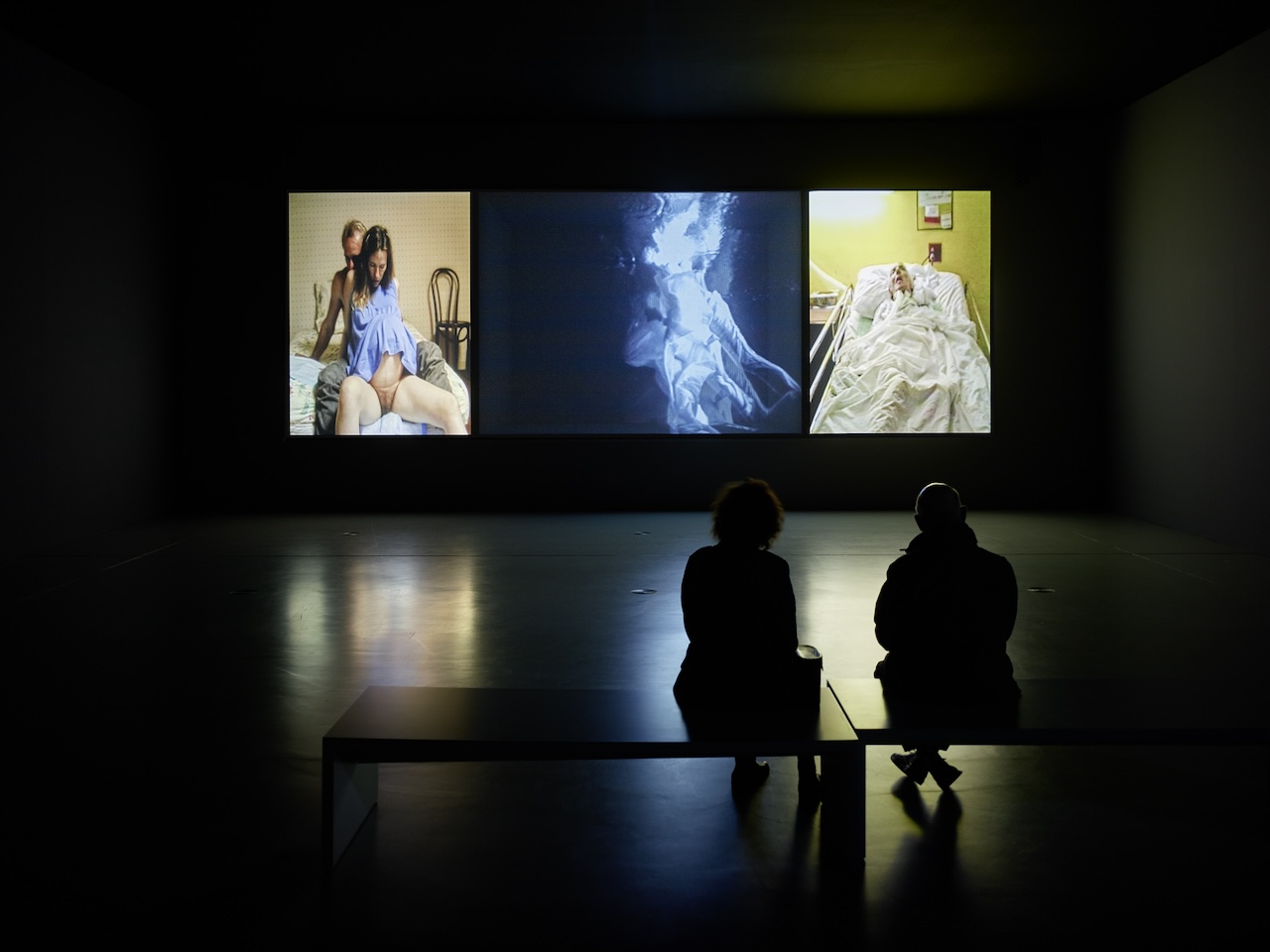 Not long before, my father had died, by his own hand, something he’d long premeditated and planned. I was still in the midst of grief, and Bill’s piece stirred me deeply. The Triptych and other works in the exhibition were rooted in a longer video of his – "The Passing" – from 1991, which featured images that recur in his artisitic journey, and pull it together by poetic association rather than linear exegesis. Not least cacti in the desert, temporarily illuminated by passing car headlights, as if brought to life for brief instants, as consciousness can be when it incarnates. There was something both deeply comforting about Bill’s work, not as escape from pain, but as a revelation that brings meaning to the chaos that accompanies encounters with mortality.
Not long before, my father had died, by his own hand, something he’d long premeditated and planned. I was still in the midst of grief, and Bill’s piece stirred me deeply. The Triptych and other works in the exhibition were rooted in a longer video of his – "The Passing" – from 1991, which featured images that recur in his artisitic journey, and pull it together by poetic association rather than linear exegesis. Not least cacti in the desert, temporarily illuminated by passing car headlights, as if brought to life for brief instants, as consciousness can be when it incarnates. There was something both deeply comforting about Bill’s work, not as escape from pain, but as a revelation that brings meaning to the chaos that accompanies encounters with mortality.
When I decided to approach Bill about making a film, he'd suddenly made it big. The Whitechapel show and “Five Angels for the Millennium” (2001) at the Anthony d’Offay Gallery made a splash. There were several film-makers after him. I took the plunge, and without film finance or support, I went to LA, and asked if I could film at the shoot he was then involved in - a section of “Going Forth By Day” (2002), in which a fierce cascade of water floods a house from within, and empties it of people and contents. That piece was another exploration and death and resurrection, a large-scale and immersive five-screen installation that drew reference from a number of ancient myths and alluded to Renaissance murals and paintings.
After two days of discrete filming on set, Kira came over and suggested that I should have dinner with them. It was the first of many meals at their favourite Japanese restaurant in Long Beach, near their home. We just clicked. At the end of the meal, Bill said, “Well I think you should be the one to do the film.”
The collaboration was a delight. Bill and Kira were as generous as possible, always available and supportive of the project. We went to Assisi, where Bill talked in a very moving and articulate way about the Giotto murals. To the Ruhr where the 5 Angels piece had been installed in an empty gasometer, the sound from the screens reverberating in the vast space, and reminding me of Bill’s origins in musical work with David Tudor. I went with them to Berlin as well for the installation of “Going Forth By Day”. Once again, although run off his feet, Bill was always attentive, never acting the art world superstar (that he was).
Of all the artists, musicians and others in the creative field that I have made films about, Bill Viola was the one who behaved least like a star. I always felt that he understood the challenge of making a film portrait. He was encouraging in a quiet but sympathetic way, interested in my other work and in my family, not just wrapped up in his world. When he met my younger son Sam, then about 14, after a private screening of the finished film, and we were walking back to his hotel, Bill spoke to him about his passions, at that point making music. Sam told me that he'd said something which I believe has stayed with him ever since. "Don't do things just for money," Bill had said, or words to that effect. "Go for what's in your own heart, that's the only way".
One of our final shoots together was on a day trip to Joshua Tree in the desert not far from LA. This was home ground for Bill, and I felt fortunate to go there with him. We left Long Beach shortly after dawn. He spoke as he drove and I filmed him. I felt him open up as we entered the wilderness that had inspired him. That visit to the desert provides a suitable closing sequence to the documentary, with Bill quoting the Japanese poet Ryokan, and then walking, alone, vanishing into the distance among the cacti. An apt image, I feel today, for his gradual fading away, beset with Alzheimer’s, over a period of 10 years, his faculties declining month by month.
In later years, I wasn’t as moved by some of the pieces in which he used actors, more often than not slowed down to something approaching immobility. The first videos in the genre were stunning, inspired as they were by Old Master paintings. I preferred his work poetic and allusive rather than literal, and this was for me the weakness of some of his work with Peter Sellars, for his production of Wagner’s Tristan and Isolde, in which powerful images of the sea and trees worked wonderfully, but evocations involving actors, grounding the images in the wrong kind of personal, were short on the otheworldly magic of his earlier creations.
Towards the end of his productive life, before the decline had begun, Bill started to more openly acknowledge Kira Perov’s part in his creative work. Bill exposed his inner life with immense courage and profound vulnerability and his wife was there alongisde him. Kira was his companion on this journey, and gave herself totally to the work. I was close enough to the process to see that Bill couldn't have achieved what he did without her immense contribution and support. It was a rare thing, and will hopefully now be fully recognised.
Bill Viola is immensely popular with the public, worldwide. His work, informed by Buddhism, Sufism and the European mystical tradition, touches on a common acknowledgement of the mystery of existence, the healing nature of art. This never in a didactic way, but through images that have universal resonance and transformative power. Much fashionable contemporary art avoids the numinous, no doubt because the territory of the sacred has been tainted by organised religion and perhaps a fear of letting go. Bill Viola’s work expressed, as he said so eloquently, the content that shines forth, when the weight of form drops away.

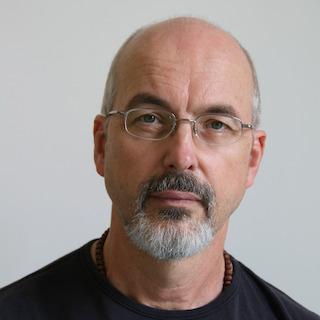



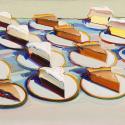

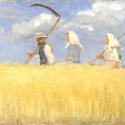

![SEX MONEY RACE RELIGION [2016] by Gilbert and George. Installation shot of Gilbert & George 21ST CENTURY PICTURES Hayward Gallery](/sites/default/files/styles/thumbnail_125_x_125_/public/mastimages/Gilbert%20%26%20George_%2021ST%20CENTURY%20PICTURES.%20SEX%20MONEY%20RACE%20RELIGION%20%5B2016%5D.%20Photo_%20Mark%20Blower.%20Courtesy%20of%20the%20Gilbert%20%26%20George%20and%20the%20Hayward%20Gallery._0.jpg?itok=3oW-Y84i)




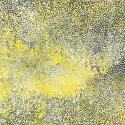
Add comment